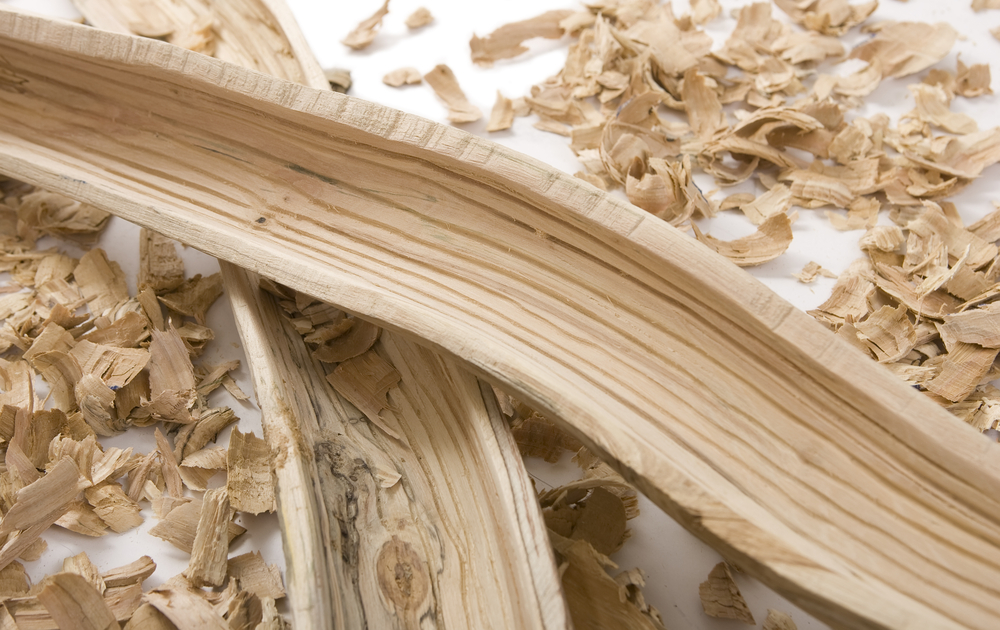Timber prices in Australia continue to rise, resulting in higher building costs and longer construction times, according to industry and financial experts.
After a slowdown in the international market, construction companies and timber producers are still warning of growing wood costs, with prices not expected to stabilize till September 2022 at the soonest.
Why are wood prices so high?
As a result of the pandemic and the ensuing devastation caused by bushfires, Australia is currently experiencing a serious timber shortage.
In light of the rising costs of lumber due to the scarcity, many are calling for the federal government to take another look at its HomeBuilder program.
Table of Contents
What is the current price of wood in Australia?

Owing to COVID-related late deliveries and increasing demand in major markets like the United States and Europe, fresh timber has seen its worldwide prices soar to historic heights this year.
Highs of $US1711 per 1000 board feet were reached in May of 2021. Since then, they’ve decreased to $US774 due to a combination of lower demand and higher supply.
Big River Industries’ Jim Bindon, the director of the ASX-listed wood seller, said that even while prices in Australia had not risen as much – by 30 or 40 percent – a fall was still a few months away.
We didn’t see those massive percentage rises in Australia,” he remarked.
Are Australian wood prices expected to increase further?
A few more wood price hikes in Australia are expected to take place shortly. However, Bindon does not expect prices to grow by more than 50% compared to the pre-COVID standard because major Australian timber suppliers have informed him that they foresee more price increases in August and September.
Framing timbers are a crucial and difficult-to-replace component of house construction, so an increase in their price is likely to affect new home development across the country.
As a result of a lack of wood supply, financial expert JP Morgan predicted that building company CSR’s growth in the construction supplies industry would likely be limited.
What are analysts’ views on the wood price hike in Australia?

Analyst Brook Campbell-Crawford of JP Morgan’s timber industry said in a note to investors that shortages “may considerably influence” Australian housing construction in the years 2021–2023.
The building industry and homeowners alike warned last month that shortages of timber and bricks in Victoria were causing costly delays to renovations and new construction projects.
Can the wood shortage in Australia worsen?
One lobbying group predicted that things would get even worse. According to Rebecca Casson, the chief executive officer of Master Builders Victoria, demand for timber is not likely to surge for another few months.
As a result of these inevitable hold-ups, she said, builders, tradespeople, and suppliers are “suffering the worst of the price rises and delays.”
According to her, “we are asking all the members to engage closely with clients to consider alternate time frames and we strongly advise consumers to plan for premium increases.”
How are builders handling wood delivery delays?

Metricon’s Victorian general manager of construction and logistics, Peter Demopoulos, told prospective clients that prices will rise somewhat, and timescales will lengthen for new construction contracts.
A delay in the delivery of timber products isn’t going to take a huge amount of time, he said. It’s a source of aggravation for all builders in the sector that we’re only getting hand-to-mouth supply to meet our needs.
No one knows exactly when the lumber will arrive on-site, and there have been a few setbacks, but it will arrive in the end.
Are there any positives to the Australian wood shortage situation?
“Scarcity” in the sector was mentioned by Bindon as a possible cause of the wood shortage in Australia.
In the long run, he sees this as a benefit for many builders who have trouble getting the specific product they requested.
That surge of activity has been reined in by a natural safety valve, he said. Things will rise by 15%, but it will be sustained over a long period rather than a blizzard where no one can get a job and prices skyrocket by 30 percent.”
Even though some customers will have to wait a little longer for their Australian home, I believe this is the more prudent course of action for the business as a whole.
How is the wood to build a deck?

From $320 to $500 a square meter, the cost of installing hardwood timber decking is possible. In this case, it can come to:
- A 20-square-foot deck might cost between $6400 and $10,000
- A 30 square-foot-deck might cost anywhere from $9600 and $15,000
- A 40 square-foot-deck costs between $12,800 and $20,000
The addition of a hardwood deck to your backyard might enhance its aesthetic appeal. Decking made of hardwood has a wide range of prices, but it’s wiser to shop about for the best deal than to settle for the lowest alternative.
How much are the different types of wooden decking?
Wooden decking expenses include both the materials and installation labor costs of the decking. According to kind and size, the following are the average prices:
- Blackbutt (86mm wide) costs about $88 per square foot
- Jarrah (85mm wide) is about $75 per square foot
- Merbau (140millimeter thick) costs approximately $60 per square meter
- Silver Top (90mm wide) costs roughly $69 per square foot
- Spotted Gum (86mm wide) is approximately $105 per square meter
- Ironbark (90mm broad) costs about $5.40 per linear meter
Decking material selection is largely a matter of personal taste and financial constraints. Timbers Blackbutt and Jarrah are ideal for decking if you reside in an area prone to bushfires.

Only decking is included in these prices. You’ll incur additional costs if your decking gets support from a different type of timber than the decking itself.
You should expect to spend roughly $800 per m2 on flooring and covering, or about $1000 for every m2 if you would like cyclone-proof raised roofing.
How much does it cost to have decking installed in Australia?
As discussed above, a square meter of hardwood decking might cost anywhere from $320 to $500 for every square foot.
Here are the prices mentioned above once more:
- Between $6400 and $10,000 for a 20-square-foot deck
- A 30m2 deck might cost anywhere from $9600 and $15,000 depending on the materials used
- $40 square foot deck costs between $12,800 and $20,000
Included in the purchase price are the following items: removing stumps from the group, erecting concrete stumps, joists, and bearers under the flooring, and putting in the trellis.
How does hardwood timber compare to treated pine in Australia?

Hardwood timbers are more expensive for decking contractors to work with than treated pine.
Compared to treated pine decking, which costs about $200 per square foot to install, hardwood decking is significantly more expensive, so keep that in mind when estimating your budget.
Although the cost of setting up ironbark timber might still be costlier due to its dense nature and the necessity for pilot gaps for nails, it is exceptionally durable.
If the deck is being constructed on a slanted block, expect to pay more because the contractor will have to balance the deck and add stairs.
It will cost more to build an elevated deck and cover it, as opposed to a deck that is lower to the ground.
How much does it cost to seal a deck made of hardwood timber?
The cost of setting up hardwood timber decking might not include the expense of encasing the wood.
In some cases, the cost of sealing might be high.
Deck sealing costs for small areas costs between $350 and $450. The cost of sealing a medium-sized deck might range from $700 up to $1000. Sealing a big deck might cost up to $2500.
The cost of the deck will be determined by its size. At least two or three coats of sealer will be applied by decking contractors.
How does the domestic price of timber affect fabricated wood manufacturing in Australia?

Purchasing expenses for fabricated wood manufacturers are heavily influenced by the cost of domestic timber.
Having reduced wood costs means cheaper pricing for consumers, which industry operators can pass on to their clients.
Firms in the industry, on the other hand, can keep prices fixed and enhance profits. As a result, industry participants benefit from a decrease in the domestic price of timber.
Due to the COVID-19 pandemic and reductions in government subsidies for housing buildings, the domestic price of lumber is expected to drop in 2021 and 2022.
What impact does the domestic price of timber have on the Australian logging and forestry industries?
Logging companies’ revenue and profitability are affected by the domestic price of timber. It is common for forestry companies to see an increase in revenue when the domestic price of timber increases.
It is possible to boost profit margins even if operational costs remain unchanged when domestic timber prices rise.
While domestic timber prices were predicted to fall in 2020–21, they have risen over the previous five years.
What is the impact of the Australian domestic timber price on wood chipping?

The price of timber in the United States and the price of wood chips in the rest of the globe affect the sector as a whole.
Wood products, such as wood chips, can contribute to revenue growth when quantities increase or remain stable due to higher timber prices.
Due to rising prices for timber and wood chip products, the sector can grow. It is projected that the domestic price of timber will decline.
How does the cost of timber in Australia affect the sawmilling industry?
Because logs and timber are major industry inputs, their prices have a direct impact on industry revenue and profit.
Cheaper logs lead to cheaper lumber, and vice versa. Some of the cost savings can be passed on to buyers by lowering the price of logs and timber.
In Australia, how does the price of timber affect the cost of resawing and dressing?

The Australian timber industry’s earnings can benefit or suffer from rising prices. Profits and revenues in the wood products sector may rise if the price of timber rises as a result of increased demand for wood goods.
As a result of growing lumber prices, alternative items like steel and concrete become more affordable.
Increased timber prices, on the other hand, present a short-term opportunity for industry expansion.

















